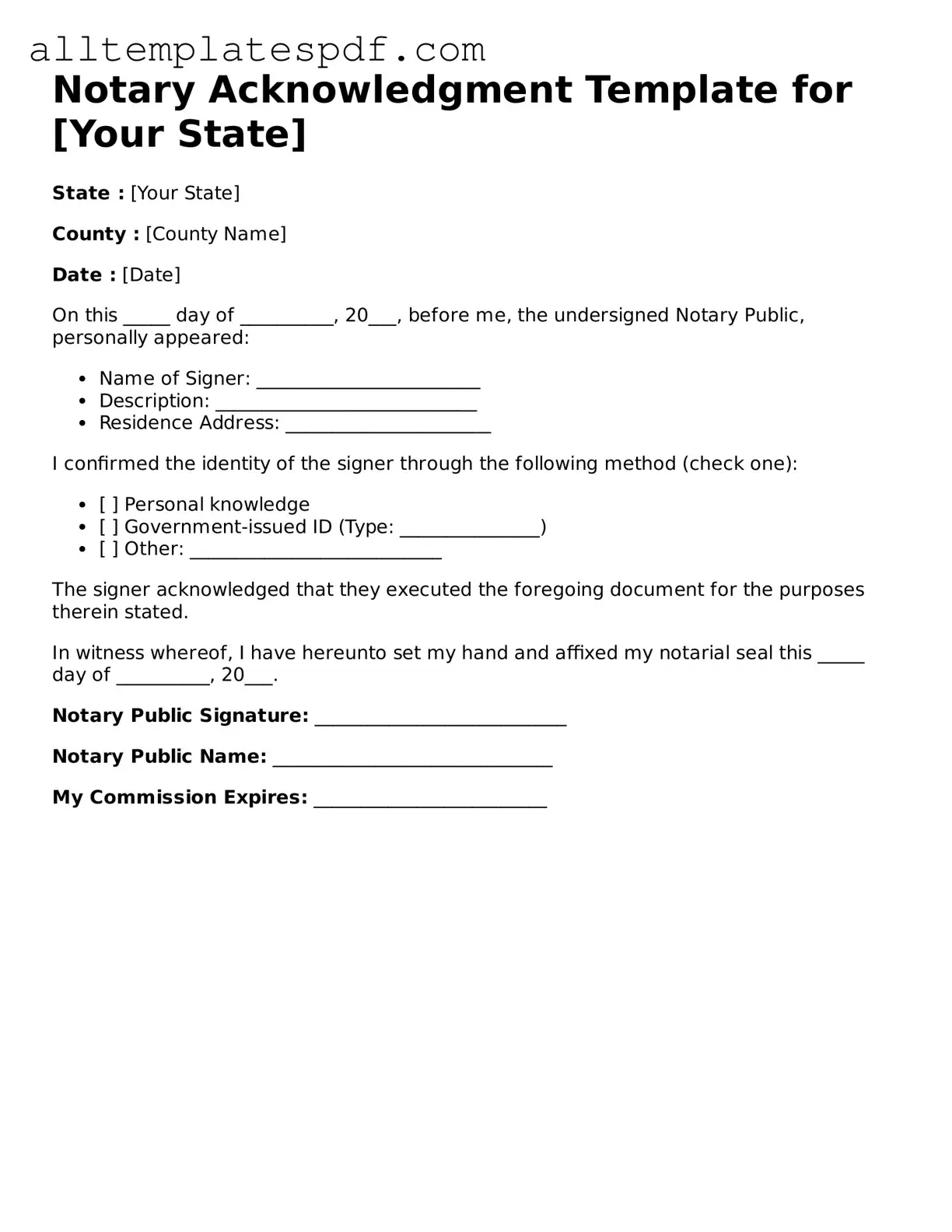Filling out a Notary Acknowledgment form can seem straightforward, but many people make common mistakes that can lead to delays or complications. One frequent error is failing to provide the correct date. The date is crucial because it indicates when the acknowledgment took place. If this information is missing or incorrect, the document may not be valid.
Another common mistake is not including the signer's name clearly. The form requires the full name of the person whose signature is being notarized. If the name is misspelled or written unclearly, it can create issues down the line, especially in legal situations.
People often overlook the requirement for the signer's signature. The notary must witness the signer’s signature on the document. If the signer forgets to sign in the presence of the notary, the acknowledgment cannot be completed. This step is essential for the validity of the notarization.
In addition, many individuals neglect to check the identification requirements. Notaries typically need to verify the identity of the signer using an acceptable form of ID. If the signer does not present proper identification, the notary cannot proceed with the acknowledgment.
Another mistake is using an outdated version of the form. Notary laws and forms can change, and using an old version may not meet current legal standards. Always ensure that you are using the most recent form to avoid potential issues.
Some people fail to include the notary's signature and seal. The notary must sign and apply their official seal to the acknowledgment form for it to be legally binding. Omitting either of these elements invalidates the notarization.
Additionally, people sometimes forget to provide the correct venue information. The venue indicates where the notarization took place, and failing to include it can lead to confusion regarding jurisdiction. Always double-check that the venue is clearly stated.
Another common oversight is not completing the acknowledgment section fully. The acknowledgment section must be filled out completely, including all necessary details. Incomplete forms can lead to rejection by courts or other entities requiring notarization.
Finally, individuals may not realize that the notary must be impartial. If the notary has a personal interest in the transaction, they should not perform the notarization. This conflict of interest can invalidate the acknowledgment and lead to legal challenges.
